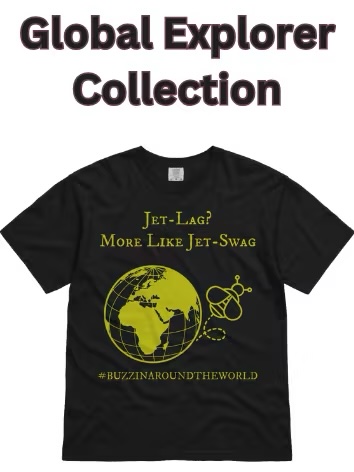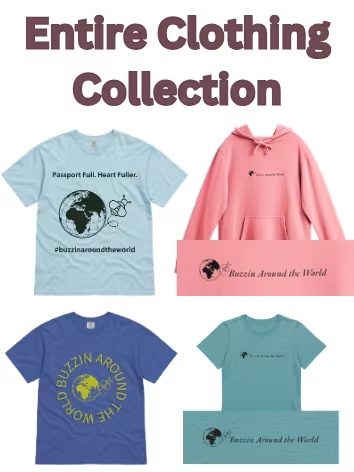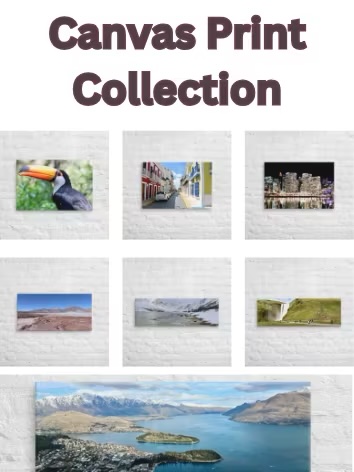Panama Canal, Monkey Island & Emberá Village Eco-Tour

About the Tour – Panama Canal, Monkey Island, and Emberá Indigenous Village Tour
I’d been dreaming of a Panama Canal tour, Monkey Island excursion, and Emberá indigenous village visit before I even set foot in Panama. This Panama eco-tour promised wildlife, culture, and engineering marvels all in one day.
Booking My Panama Canal Tour & Monkey Island Excursion
I originally spotted this Panama eco-tour on Viator for $150, but a lucky find led me to book directly with Barefoot Panama for $120. Kevin, their rep, was incredibly responsive—confirming my Panama Canal tour reservation, answering questions about the Monkey Island excursion, and sending multiple reminders about pickup details for the Emberá indigenous village visit. Snagging that better deal felt like part of the adventure!

Nico – Guiding My Panama eco-tour Adventure
At 7:15 AM sharp, I met Nico—my personable guide for the Panama Canal tour and Monkey Island excursion—in the hotel lobby. Alongside three fellow travelers from Florida (on a house swap in the Canal Zone), we piled into our van for a scenic 45-minute drive through lush countryside to the marina. There, our local captain awaited to kick off the Gatun Lake boat trip portion of this Panama wildlife adventure. Nico’s enthusiasm and deep knowledge of both the engineering marvels and the region’s wildlife set the perfect tone for our Panama experience.

A Tour to Remember: Highlights of My Panama eco-tour
This Panama Canal tour quickly climbed into my top five travel experiences. Nico divided my day into four unforgettable segments:
Gatun Lake boat trip through the heart of the canal’s man-made marvel
Playful primate meet-ups on Monkey Island excursion
Deep dive into Emberá indigenous culture Panama with a village visit
A delicious, authentic Panamanian lunch at El Trapiche
Each leg offered something unique—lush rainforest vistas and a crocodile sighting on Gatun Lake, cheeky Geoffroy’s Tamarins and White-Faced Capuchins up close, immersive stories from the Emberá community, and finally, the rich flavors of local cuisine. This blend of nature, culture, and history truly made it a day I’ll never forget.



Panama Canal, Monkey Island, and Indigenous Village Tour - Table of Contents
Disclaimer: Buzzin’ Around the World strives to provide accurate and up-to-date information based on our research at the time of publication. We respect all applicable laws and fair use principles. If you believe any information is incorrect or violates regulations, please contact us at buzzinaroundtheworld@gmail.com.
Affiliate Links and Reviews: We use affiliate links to generate income and may receive a commission at no additional cost to you when you use our links. We strive for honest and transparent reviews, even for products which we receive compensation.
Content Creation: Our content is based on our own travel experiences. All photos are our own unless otherwise stated. We sometimes utilize AI tools to assist with tasks like generating titles, summarizing content, and improving organization.
For more information: For more information, please click HERE to visit our private policy page. We can be reached at buzzinaroundtheworld@gmail.com.
Gatun Lake: Heart of My Panama Canal Tour
As we set off on my Gatun Lake boat trip—the scenic kickoff to my Panama Canal tour—I was instantly swept away by the lake’s vastness. The man-made reservoir, vital to the canal’s operation, felt more like a rainforest sea. Almost immediately, I spotted a massive crocodile sunning itself on a muddy bank. My camera lens was still fogging from the humid air, though, and by the time I wiped it clear, the reptile had slipped beneath the water.


Moments later, our captain expertly steered us alongside a colossal container ship (the first of three) for that heart-pounding “up close” shot. It was a vivid reminder of the canal’s engineering might in action.



Bridge & Canal Traffic Control
We glided past a repaired bridge—bearing scars from a ship that once lost power and careened into its supports. Nico explained that massive vessels need roughly one to two miles to stop, so every ship transiting the canal is flanked by at least two tugboats. This critical safety measure keeps both wildlife and ships protected.


Wildlife Watch on Gatun Lake
As we neared Monkey Island excursion territory, the real stars of my Panama eco-tour made their presence known:
Anhingas and Cormorants spreading wings to dry in the sun
A large iguana basking on a low-hanging branch
A family of bats roosting in the canopy above
Each sighting underscored how this tour blends wildlife thrills with engineering wonders.





Monkey Island Magic: Intimate Encounters on My Monkey Island Excursion
Monkey Island is actually a cluster of islets home to various monkey species. My Monkey Island excursion brought me face-to-face with three captivating primates: Geoffroy’s Tamarins, White-Faced Capuchins, and Mantled Howlers. It’s important to note that most of these monkeys are rescued from the illegal pet trade or poaching. Each one has a unique name and personality, adding a touch of individuality to my Panama wildlife adventure on this Panama eco-tour.



Monkey Island Etiquette & Feeding Tips
Nico walked us through proper Monkey Island excursion etiquette to keep these animals healthy:
Offer only small portions of banana chips and peanuts.
Follow each feeding with a lemon or lime to aid digestion.
Never pet, hug, or tease them by hiding treats.
Overfeeding leads to sluggish, unhealthy monkeys—so I stuck strictly to Nico’s guidance, even as my inner monkey-lover wanted to dole out handfuls!




Tamarin Island Adventure: Geoffroy’s Tamarins & Capuchin Friend
My first stop was Tamarin Island. The tiny Geoffroy’s Tamarins darted in for banana chips, their little hands snatching treats faster than I could blink. To my surprise, a mischievous Capuchin named Minion—adopted by the tamarin troop—strode in for the peanuts, clearly enjoying every crunchy bite. When Nico noticed Minion looking parched, the clever Capuchin leaned forward and drank from a fellow traveler’s hand—an unforgettable moment. I scrambled for my GoPro, but its awkward angle meant most footage didn’t turn out. Still, that cheeky grin is forever etched in my memory.





White-Faced Capuchin Chaos on Monkey Island Excursion
Next, we motored to the Capuchin domain—another highlight of my Panama eco-tour. After a brief wait, the White-Faced Capuchins appeared en masse. One particularly daring youngster even leapt onto our boat for a peanut reward, sending our group into delighted cheers. For about 15–20 minutes, we watched them swing effortlessly through the trees, and I was especially moved by a tender mother-infant pair sharing a quiet moment high above us.





Howler Monkey Symphony: Mantled Howlers in the Canopy
Our final island was home to the elusive Mantled Howlers. True to their name, these howler monkeys stayed high in the canopy, their deep calls echoing through the trees. Nico explained that no guide has ever coaxed them down—so our captain gently revved the engine. Immediately, the forest erupted in a haunting chorus of howls, providing the perfect finale to my Monkey Island excursion.

Emberá Village & Chagres Rainforest Trek
After our primate encounters, Nico piloted us up the Chagres River to an Emberá indigenous village of just 49 people. Stepping onto their sandy bank, I was struck by how seamlessly they blend modern comforts—smartphones and colorful clothing—with age-old traditions. This immersive stop remains one of the brightest moments of my Panama eco-tour, offering a genuine glimpse into Emberá life.


Village Life and Leaf Cutter Ants
Stepping ashore, I was greeted by a bustling colony of leafcutter ants marching in single file, each carrying leaf fragments uphill. Nico explained how they farm a specialized fungus with those leaves—an ingenious example of rainforest agriculture. Watching the workers and “quality control” ants at work felt like peeking into a tiny, well-organized society.


Handicrafts & Ceremonial Dance
We then moved to the main hut, where villagers invited us to photograph their handmade carvings, woven baskets, and vibrant textiles. I couldn’t resist buying a small basket and a wooden monkey carving—keepsakes of this Emberá indigenous village visit. Before departing, the women and children performed a joyful ceremonial dance to drumbeats, their smiles and colorful attire capturing centuries of culture in each step. We even met Scott—a playful village dog named after the color of Scott Brand toilet paper—who followed us around like a furry ambassador.






Rainforest Trek & Nature’s Wonders
Our adventure kicked off with a 20-minute trek along a rain-slicked path. The previous night’s downpour had turned the trail into a slippery maze, making each step an exercise in balance—and adding an exhilarating edge to this leg of my Panama eco-tour.


Gumbo Limbo: The Rainforest’s “Tourist Tree”
Towering above the understory, the Gumbo Limbo Tree earned its cheeky nickname by shedding bark in thin, curling strips—almost like a sunburnt tourist peeling on vacation. Nico pointed out how this constant exfoliation helps ward off parasites, a clever natural adaptation worth appreciating up close.


Camouflaged Frog: Master of Disguise
Hidden among damp leaves, a tiny frog demonstrated perfect camouflage—its mottled green and brown skin blending seamlessly into the forest floor. Spotting this little amphibian felt like finding a living, breathing illusion, and highlighted the Panama wildlife adventure waiting just feet from the riverbank.

Hidden Gems: Ant Nest, Black Palm & Lifesaving Water Tree
Further along, we encountered a leafcutter ant colony, their meticulously crafted nest mimicking a wasp’s hive in both structure and precision. Nearby stood the porcupine-like Black Palm Tree, its dense, spiky crown offering a striking contrast to the lush foliage. The grand finale came when we discovered a hollow tree brimming with fresh water—nature’s own emergency canteen, capable of sustaining us for days if stranded. This remarkable find perfectly capped off one of my most vivid Emberá indigenous village experiences.




Lunch at El Trapiche Restaurant
At El Trapiche, I dove into the Fiesta Panama sampler—chicken soup to start, followed by rice with shredded chicken, beef stew, sweet plantains, a crispy beef empanada, and a spicy chorizo link—each bite restoring energy after my Gatun Lake boat trip and Monkey Island excursion. I also sampled crunchy pork rinds and golden fried yuca, then capped it off with warm chocolate churros. It was the perfect finish to my Emberá indigenous village visit and the ideal capstone to my Panama eco-tour.


Panama Canal, Monkey Island and Indigenous Village Tours and Packages
If you are interested in booking this tour or a similar one, you can do so with the links below. Please note that as an affiliate of Viator, I will receive a small commission if you book using one of my links. This commission is at no additional cost to you.
 5 Hour Combo - Panama Canal Eco-Cruise with Monkey Island and Rainforest Walk - $105.00 In this tour that departs from central Panama City you will get up close with the Panama Canal and the abundance of wildlife on its shores. You will take a cruise in a boat right next to the transiting ships and visit islands in Gatun Lake that are full of wildlife. |
 Private Tour Panama Canal, Railway and Monkey Island - $165.00 Day tour to the Atlantic side of Panama in a tour mixing the amazing structures of the Panama Canal and the beauty of the rainforest with the experience of riding The Panama Canal Railway. Small groups. |
 Full-Day Monkey Island and Indian Village Tour from Panama City, Panama - $149.43 Small group tour of Lake Gatun and Soberania National Park, searching for wildlife and visiting an indigenous village. This is a great combo of 2 popular tours, wildlife viewing where you can see up too 3 different types of monkeys as well as a real Indian village. |
 Monkey Island and Panama Canal Eco Tour - $75.00 Enjoy the exciting adventure of being inside the Panama Canal and get to know with all your senses the operation, history and biodiversity around it, an stunning experience surrounded by wildlife and rainforest. |
 Monkey Island Tour from Panama City - $54.52 This 4-hour tour is the easiest way for you to have close-up contact with monkeys such as white-face, howlers and geoffrey´s tamarine. |
 Private Monkey Island Boat Tour at the Panama Canal - $255.00 You will be in a lake, that was the largest man made in the world and on top of that, you will be so close to the huge ships transiting from Atlantic to Pacific or viceversa... simply: Espectacular. |
Affiliate Partner of the Month – Fourthwall
Fourthwall powers our brand-new Buzzin’ Around the World Merch Shop. Pick up a tee, hoodie, or sticker. All profits will help me continue to run this site and deliver great content!
Buzzin Around the World's Merch Shop
Want to Launch Your Own Merch Line?
Scroll to the bottom of our Fourthwall page and tap “Start Your Own Store.” That’s a referral link—if you sign up, Fourthwall rewards me with store credit I can use to buy more gear (at no extra cost to you). We only recommend tools we use and love.
Earn $200 in Travel Rewards with the Capital One VentureOne Rewards Card
The Capital One VentureOne Rewards Card is one of the few rewards cards that does not charge an annual fee. Cardholders can earn 1.25 points for every dollar spent while enjoying 0% APR for 15 months.
Currently, Capital One is offering a signup bonus of 20,000 points (worth $200 in travel rewards) when the cardholder spends $500 in the first three months. If you are interested in this card, I would appreciate it if you would sign up with the link below, as I earn a referral bonus of 10,000 points. Those points are worth $100 in travel rewards and will help me continue to bring great content to Buzzin’ Around the World.
Once again, the Capital One VentureOne card is one of the few reward cards without an annual fee and is the perfect card for someone who is just starting to get into the travel points game.
Related Content
Share this:
- Click to share on X (Opens in new window) X
- Click to share on Facebook (Opens in new window) Facebook
- Click to share on LinkedIn (Opens in new window) LinkedIn
- Click to share on Pinterest (Opens in new window) Pinterest
- Click to share on Tumblr (Opens in new window) Tumblr
- Click to share on WhatsApp (Opens in new window) WhatsApp
- Click to share on Reddit (Opens in new window) Reddit
- Click to print (Opens in new window) Print







